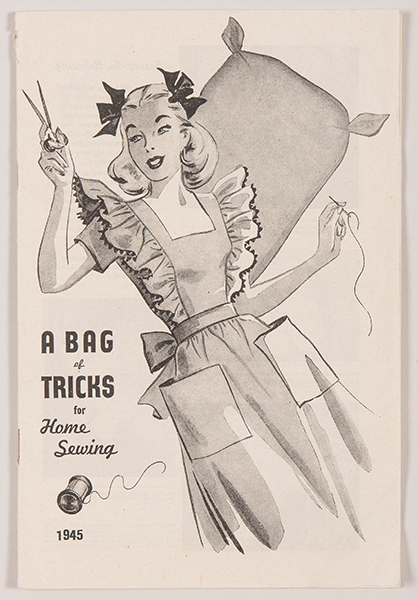Thrift Style explores the reuse of feed sacks to make clothing and other household objects and illuminates how the “upcycling” of these bags mutually benefited twentieth-century consumers and businesses. With forty-one works from patterns to garments, it serves as an example of past ingenuity that can inform today’s efforts towards sustainability. Thrift Style will be on display at the Park City Museum from May 15, 2023 to August 16, 2023.
The exhibition, organized by the Historic Costume and Textile Museum and the Marianna Kistler Beach Museum of Art, both at Kansas State University, provides a nostalgic view into American ingenuity, sensibility, and optimism during a particularly challenging time of economic hardship and war—the period of the Great Depression and World War II. The reuse of feed, flour, and sugar sacks was a cost-saving and resource-saving approach employed by homemakers to make new items to meet their families’ needs.
In the 1920s and ‘30s, manufacturers began producing patterned and colored feed sacks to give home seamstresses more options. During World War II, the federal government limited fabric use for individual garments and homemakers were obligated to use thrifty approaches to repurpose what was available to them. As fabrics from feed sacks were not considered a limited resource, women turned to them as an accessible and patriotic option during the war effort. In response, trade organizations and manufacturers promoted the thrifty use of feed sack fabric by publishing how-to brochures and booklets with clothing designs, mending instructions, and other suggestions for restyling clothes.
The artifacts in the exhibition demonstrate a mutual goal of sustainability, with local businesses—mills and feed and seed operations—tailoring product design and marketing campaigns to attract customers; and consumers using their imaginations and practical skills to tailor clothing, aprons, quilts, dolls, and more out of the industry’s byproduct: feed sack cotton. This exhibition offers a snapshot of domestic life during this time, when recycling was as critical as it is today, and it provides one of the best examples of upcycling in our nation’s history.
It is organized by The Historic Costume and Textile Museum and the Marianna Kistler Beach Museum of Art, both at Kansas State University, and ExhibitsUSA, a program of Mid-America Arts Alliance.
About ExhibitsUSA
This exhibition is toured by ExhibitsUSA, a national program of Mid-America Arts Alliance. ExhibitsUSA sends more than twenty-five exhibitions on tour to over 100 small- and mid-sized communities every year. These exhibitions create access to an array of arts and humanities experiences, nurture the understanding of diverse cultures and art forms, and encourage the expanding depth and breadth of cultural life in local communities. For more about ExhibitsUSA, email MoreArt@maaa.org or visit www.eusa.org.
About Mid-America Arts Alliance
Mid-America Arts Alliance (M-AAA) strengthens and supports artists, cultural organizations, and communities throughout our region and beyond. Additional information about M-AAA is available at www.maaa.org.

Headline image caption and credit: Seviella Smith Frischer (1893-1969), Four Patch Quilt, c. 1930; feed sack cotton, 80 x 75 inches; Courtesy of Kansas State University Historic Costume and Textile Museum.

